By James Lowe
Working in a field that has touched your life so personally is a strange and poignant thing. For me, I found that intersection in Acute Myeloid Leukemia (AML), a cancer that disrupts the production of blood cells. This is the disease that claimed the life of my beloved cousin Alison, which drives my work every day at Vor Bio.
Alison’s Journey
By Darlene Lamphier (Alison’s mother)
“Alison’s journey began in September 2000, when she came down with a common cold. However, she never fully recovered and remained unwell. Despite frequent visits to the doctor and testing for many illnesses, including parasites, there was no clear diagnosis. She became increasingly weak and lethargic, not her usual self. In hindsight, a simple blood test might have revealed the underlying issue sooner.
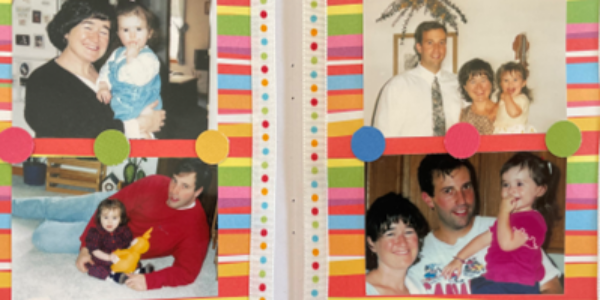
We managed to make it through the holidays, but in January 2001, after a trip to the mall to celebrate my birthday, Alison collapsed while taking a bath—conscious, but she simply collapsed. We rushed her to the emergency room, where the doctors noticed petechiae on her face. I had initially assumed they were freckles, as I have them too, but the doctors suspected something far more serious. They told us she might have leukemia and transferred her to a hospital in Burlington, Vermont.
There, after a bone marrow biopsy, Alison was diagnosed with Myelodysplastic Syndrome (MDS), which had the potential to transition into Acute Myeloid Leukemia (AML). The medical team recommended a cord blood transplant at Duke University, and we hoped to continue before the MDS progressed to AML. However, during our journey to Duke, Alison developed a tumor in her breast, a sign that the disease had already transitioned to AML. This made the path forward even more challenging.
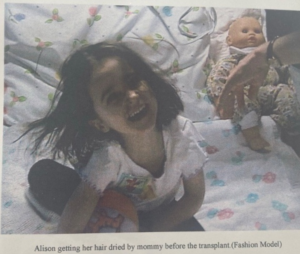
In April, Alison underwent her first cord blood transplant. Each morning, we anxiously awaited the results of her blood tests, hoping to see signs of white blood cell growth. The nursing staff would write down each patient’s cell counts on their doors, and every day we looked for any improvement in Alison’s numbers, but her white cell count never increased. About five weeks later, her medical team decided that she would need another transplant.
This time, Alison had to undergo radiation therapy, and her father, Steve, donated his white cells to stimulate her immune system. Unfortunately, this too was unsuccessful. After the second transplant failed, the doctors offered us an experimental drug. I cannot recall its name, but it gave us a glimmer of hope. Alison started to improve, showing signs of white cell growth, though her T-cells remained abnormal. Despite these small improvements, the medical team informed us that Alison would need palliative care, and we went home to Vermont.
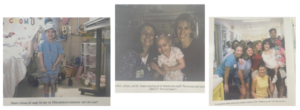
We were overjoyed to return home, and I was in complete denial about the severity of her condition, believing she was improving. One evening, my husband set up an inflatable pool for Alison to enjoy, and she had the best time. Later that night, however, her breathing became labored, producing a loud, unsettling sound. At around 2 am, she awoke, screaming in pain and saying her head hurt. I called the nurse, but by the time they checked on her, she had fallen back asleep, and her breathing had improved. I thought she was finally turning a corner.
The next morning, I woke up late, which was unusual. Alison was still asleep, and I asked the nurse to check on her. When they examined her pupils, they knew something was wrong. Doctors and nurses rushed her for a CT scan, which revealed a brain aneurysm that had ruptured. Although surgery was a possibility, given everything Alison had endured, we could not bear to put her through anymore. Surrounded by her family, Alison passed away eight hours later.
Alison touched so many lives during her battle, especially through the CaringBridge page we set up for her. This was before the days of social media like Facebook, yet people from all over the country followed her journey and prayed for her recovery. The outpouring of support was overwhelming, and everyone who knew her was devastated by her passing. We genuinely believed she was going to beat it.
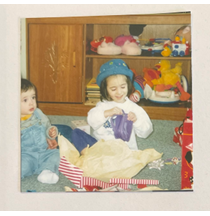
Amid this tragedy, our son Sam, who was 18 months old at the time, became our light. He brought us moments of joy and gave me a sense of purpose during such a challenging time. A year later, we welcomed our daughter, Hannah, who was the answer to many prayers.
We continue to talk about Alison often, imagining the compassionate, strong, and successful person she would have become. Her memory lives on in our hearts, and we carry her spirit with us every day.”
-Darlene Lamphier (Alison’s mother)
I was born the year she passed, just old enough to give her a smile and a wave from the hospital window. I was too young to understand the gravity of that moment, but as I grew older, I realized how much this loss affected our family.
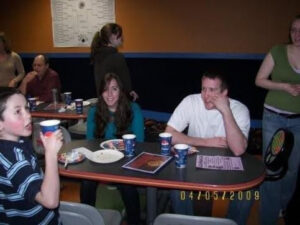
Growing up with a large, tight-knit family, we would come together every year on her birthday to celebrate her short but joyful life. Whether going to the bowling alley, playing laser tag, or cooking a family meal, we always found a way to celebrate. Even when we got older and people started to move away, we would send videos of ourselves releasing balloons on her special day. This taught me an important lesson – to not focus on the negative outcomes, but to celebrate the moments we cherish along the way.
As I got older, I started to ask more questions about Alison. I learned what limited options there were for patients. Unfortunately, the available care at that time could not combat the effects of this unwavering disease.
Learning about this unsettling truth inspired me to give back throughout my life. In high school, my friend and I dyed our hair pink to support his mother’s journey with breast cancer. In college, I worked on cancer research through Darie’s Research Group. Now, I work at Vor Bio, supporting the clinical manufacturing of AML treatments and continue volunteering my time to help support patients and their families through the YPC at Camp Casco.
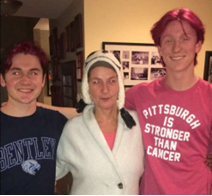
At Vor, I have the honor of working directly with novel treatments for AML. Joining this company has allowed me to help create new possibilities for patients. I find inspiration in offering hope through potentially curative therapies.
During the long processing days, I often reflect on Alison’s spirit. Her resilience, optimism, and unwavering hope inspire me daily. In her memory, I find the passion and perseverance to continue. Her legacy lives on in our work and the lives we hope to touch.
At Vor, we all have experience with cancer and how it has affected our lives. I have heard many stories from colleagues who have similar connections to cancer. I hope to share Alison’s story to let her spirit live on, for all those who have been, and continue to deal with the effects of cancer.
